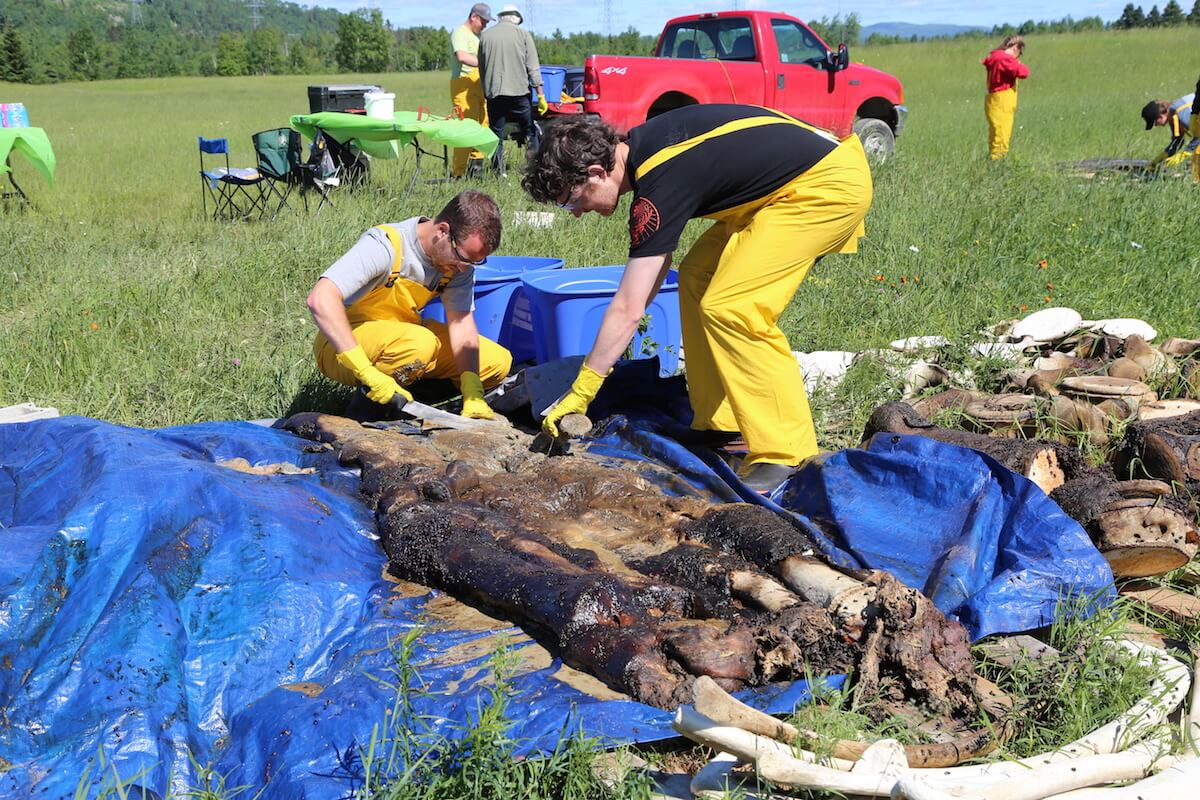After months of diligent efforts, a work site put on hold by COVID-19 measures and numerous challenges along the way, the Marine Mammal Interpretation Centre (CIMM) finally opened its doors! Beginning August 1st, visitors who enter the room will be left breathless (behind their masks, of course). There they will discover a renewed exhibit and a one-of-a-kind collection of skeletons.
“It’s a dream come true,” exclaims CIMM director Patrice Corbeil. Patrice, who also serves as director of educational programs for the Group for Research and Education on Marine Mammals (GREMM), had been toying with the idea of expanding the exhibition hall and adding new skeletons since 2015. It took nearly three years to raise the $1.5 million needed, two years to prepare the skeletons and nine months to complete the site.
“It’s really moving to see them as part of such an exquisite display,” remarks Michel Martin, skeleton assembler and senior naturalist for GREMM. Together with his colleague Patrick Bérubé, he spent the past several months amidst bones and cleaning agents, repairing the former whenever necessary and assembling them. Over the past few days, they’ve been busy tweaking the angles of each bone. Now the skeletons are ready to be admired.
“My favourite one is that of the fin whale, maybe because it’s the one that gave us the most trouble during the prep work. But perhaps also because, the way it hovers above CIMM’s exhibition hall, it reveals all of its splendour,” reflects Michel Martin. Michel will not be away from his skeletons for very long, as he will be working as a naturalist in the showroom for the remainder of the summer.
Lighting up the museum’s whales
Now that the finishing touches are complete, a crew of lighting technicians led by multidisciplinary artist Caroline Ross works to skilfully illuminate the skeletons. The general public will be able to admire the “Whale Ballet”, an interpretive sound-and-light activity that showcases this unique collection in Canada.
Even if the skeletons are a feast for the eyes, we would be remiss to overlook the acoustic repertoires of these cetaceans. In this context, the species presented in the exhibition are also featured in the soundtrack put together by Normand-Pierre Bilodeau.
“I still have many dreams for CIMM. I would like to use enhanced reality to “dress up the skeletons” and give them back their skin, so to speak. I imagine an immersion room entirely dedicated to belugas that would allow visitors to observe them in the most lifelike way possible. I hope to increase the level of interactivity in the showroom. And who knows, maybe even find a killer whale skeleton … Then we would really have a comprehensive collection,” smiles Patrice Corbeil.
Public health measures
In light of the current situation, all visitors will be required to wear a mask to enter the Marine Mammal Interpretation Centre. In accordance with the directives of Quebec’s labour standards, equity, health and safety commission (CNESST), single-use styli will be distributed to operate the interactive terminals. Exceptionally, the projection room will not be open to the public. Likewise, all whale song classes have also been cancelled.
Outdoor interpretation activities in the presence of belugas or minke whales will be carried out on the rocks adjacent to the CIMM building. A distance of two metres will have to be maintained with the naturalist conducting the activity.
A collective effort
For the renovation of its Marine Mammal Interpretation Centre, GREMM received financial support from Canada Economic Development for Quebec Regions, Canadian Heritage, Tourisme Québec, Tourisme Côte-Nord and the Haute-Côte-Nord RCM.
For the three new skeletons, approximately 100 volunteers participated in recovering the bones during necropsies carried out on whales that had washed ashore. Visit the exhibit to find out how skeletons are prepared before being brought to the museum for display!







